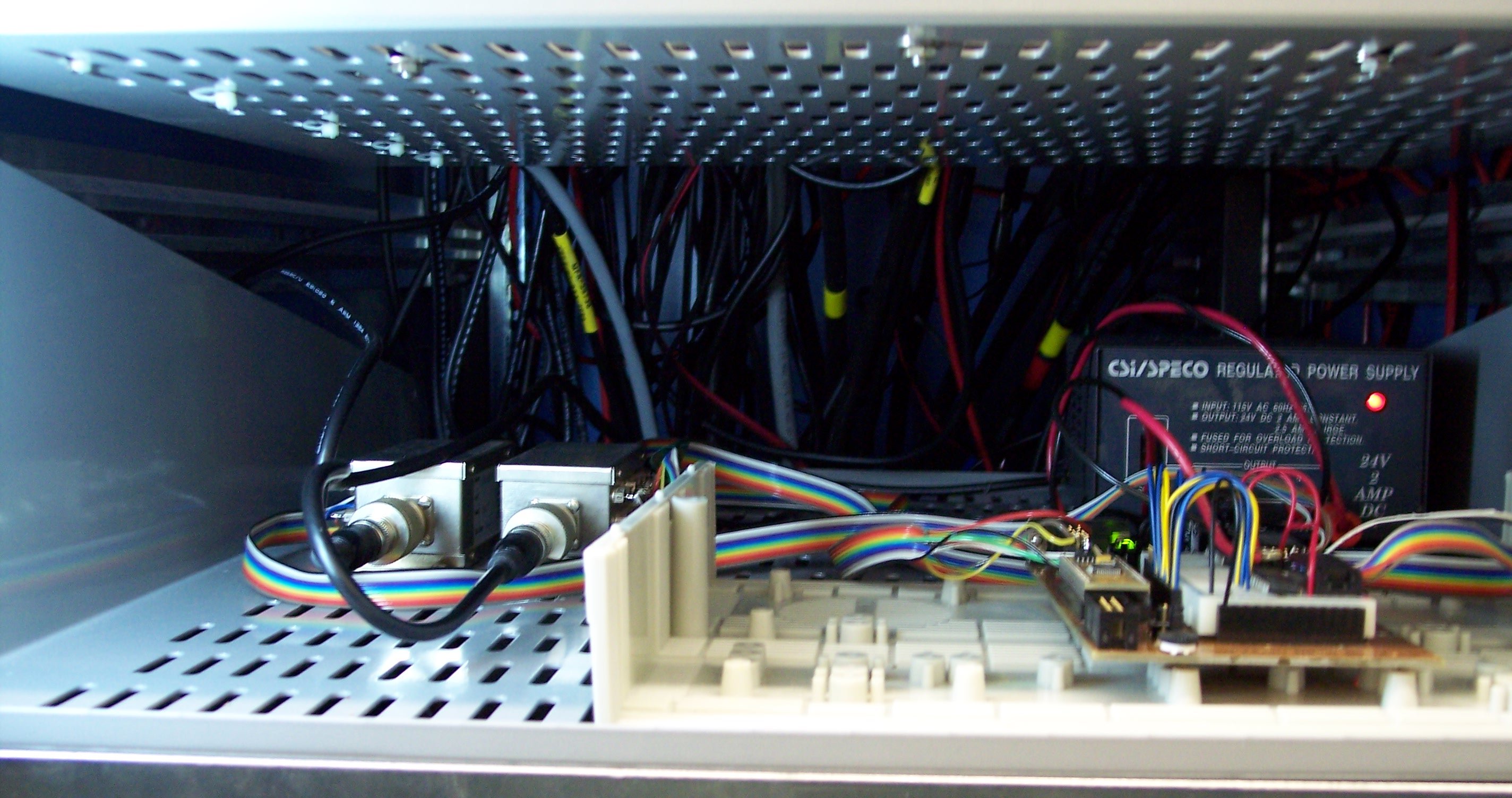W3SZ Automatic Attenuator


Parallax-Basic-Stamp-Based Automatic Bandswitched IF Rx/Tx Attenuator
At W3SZ operation is limited to frequencies from 50 MHz thru 24 GHz, but does cover all Amateur Radio Bands within that range. Transverters are used for all bands, with the IF radios operating at 28 MHz. Both conventional radios such as the Yaesu FT1000MP Mk V and Software Defined Radios such as the WSE series of hardware coupled with Linrad software and the Flex-Radio Flex5000 coupled with PowerSDR software are used.
The receive chains (antenna, mast-mounted preamp, coaxial cable, optional second preamp in the radio room, and transverter(s)) for the various bands have different system gains. Thus the noise level on each band differs. This is a problem for the IF radios in terms of dynamic range, and also for the SDRs in terms of the spectrum display.
In addition, the transverters for the different bands have differing drive requirements. Also, I prefer to do my contest operating in the 'low power' classification, and so the drive levels need to be carefully set for each band to remain within the power restrictions for this classification on each band.
My solution to all of these 'problems' was to make an automatic bandswitched IF attenuator, using BCD-coded digital attenuators driven by a Basic Stamp PIC processor that is controlled by my N3FTI Automatic Bandswitch. The attenuator puts the optimal amount of attenuation into the transmit and receive lines running between the 28 MHz ports on each transverter and the 28 MHz ports on the IF radios. With this device I have set up my station so that the noise level is the same for all 11 bands between 50 MHz and 24 GHz, and I have the optimal transmit drive level and output power on each band as well.
The hardware starts with a Basic Stamp BS2P40-IC with the Parallax Professional Development Board (Serial). Unfortunately, these items have increased in price by nearly an order of magnitude since I bought them and did this project. At this point I'd use a Parallax Propeller instead for cost reasons.
This hardware then controls two Alan Industries 50DA63 0-63 dB programmable attenuators, one for transmit and one for receive, that I purchased at the Dayton Hamvention in 2004 or thereabouts for about $15 each. Similar devices are frequently on eBay, albeit at higher prices. The outputs of the BS2P40-IC then go to two ULN2803 Octal Darlington Array IC's, one for transmit and one for receive. These allow the Basic Stamp to safely switch the 28 VDC needed to program/control the programmable attenuators. The whole project was just assembled on the development board using the color-coded jumper wires that came with the development board kit. Thus minimal soldering was required. The only soldering that was done was that for the external connections, so that they would not pull loose.
My code for this project is here. You can open it with WordPad or Notebook.
Copyright 1997-2007 COPYRIGHT Roger Rehr W3SZ. All Rights Reserved